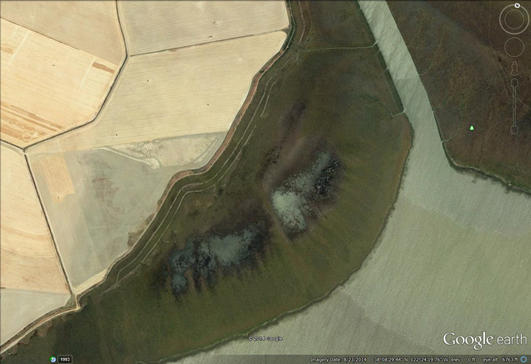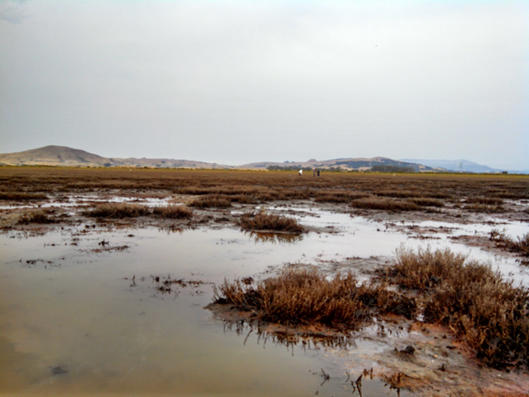As we discussed earlier, the first phase of the Sonoma Creek Enhancement Project entailed building a long access road so we could get our heavy equipment out to the places we need to work. That road is now finished, and we're getting started digging the channels that will bring this salt marsh back to life.
But first a little more about the road. Before we could get started building it, we had to make sure that none of the endangered species that occupy this area would be harmed. That meant that our crew had to walk the entire length of the designated road site, flushing for salt marsh harvest mouse. Audubon California staff and consultants carefully did this before any work on the raod began. Thankfully, we found no critters.
The marsh mud is soft and wet, perfect for trapping tractors and earth movers. And once stuck, there would be almost no way to get them out. So we had to build a special kind of road that literally floats on the marsh surface, and we had to build it nearly a mile long. In the video below, we show the giant gravel mound in our staging area, the tractors laying out the road, and the earthmover taking its first trip across our new road to where it will ultimately work.
At the end of that video, you can see the earth mover pulling onto a giant wooden platform. This is necessary because the access road itself isn't nearly stable enough to support it while it's doing its work. It needs the extra stability of the platform.

Because the Sonoma Creek marsh was created relatively quickly, it wasn't able to form the natural channels that allow water to flow in and out of the site, to "breathe" naturally. Look at the above photo of the Sonoma Creek Marsh with its dead zones in the middle. Now look at the photo below of a healthy marsh in Baja, Mexico. You can actually see the spiral channels that have been naturally created to allow water to flow in and out of the marsh.

It is these dead zones that really cause a problem for the Sonoma Creek Marsh. When you go to the marsh, you can see where water has collected, forming algae and attracting mosquitos. It's a terrible environment for birds and wildlife.

Thankfully, we're now hard at work digging new channels that will allow the marsh to function ecologically. This is going to be a lot of work, and it's important to get the width and the depth of the channels correct. In the video below, you can see the project workers getting down to the business of digging one of the smaller channels. You will note the water that fills in as we dig. This is due to the marsh's inability to let water in and out -- the mud is soaked. You'll also see one of the workers actually standing in the backhoe to get a depth measurement.
Digging new channels.
By Garrison Frost
Monthly Giving
Our monthly giving program offers the peace of mind that you’re doing your part every day.




